The Italians were clearly at the forefront of the motion picture industry in its early days. Until I watched this film, nothing I’d seen so far had come close to Dante’s Inferno, also an Italian film, but Cabiria blows that film out of the water. Released on April 18th, 1914, Cabiria is the first true epic film, and it paved the way for directors like D.W. Griffith and Cecil B. DeMille, both of whom almost immediately began creating epic films of their own. Griffith was working on a film when he saw Cabiria, which he scrapped and restarted, the result being his own epic classic Intolerance.
I can’t emphasize enough how different this film is from anything I’ve viewed to this point. After watching, I searched to see if I’d missed some predecessor to Cabiria that somehow set the stage for what I’d just seen, but found nothing. Director Giovanni Pastrone invented the wheel here, so to speak. For starters, the sets are astounding. The Temple of Moloch has to be seen to be believed, as do a number of other spectacles created for this film. There are also fantastic battles, and impressive stunts. At one point, a legion of soldiers form a sort of human pyramid, using their shields as platforms, to create a makeshift staircase for someone to scale a castle wall. It’s a sight to behold!
Perhaps the highlight of the film is when Archimedes shows up. You may recall from your history or math classes, or in my case, Latin class, that he was the greatest mathematician of his age. He lived in Syracuse, Sicily, and his inventions were crucial to the city’s defense against the invading Romans. He invented what can only be described as a death ray— quite a feat for 214 B.C.!— with which he burned Roman ships during the siege of Syracuse. Cabiria includes that weapon, along with the Claw of Archimedes, in stupendous fashion.
The camera work in this film is far more sophisticated than that of any film that came before it, and while Pastrone didn’t invent the tracking shot, he employed it to a degree far beyond what anyone before him had done. He pioneered the concept of the moving camera, and Cabiria contains 52 moving camera shots in an era where only a handful of films ever utilized any camera movement at all. Previously, filmmakers had only used a panorama effect, moving the camera up and down, or from side to side, to show more of a static scene. Pastrone used a dolly to actually move the camera, which allowed him to zoom in and out of a scene. This method of moving the camera to create a sense of depth via movement, something previously only accomplished through set design, came to be known as the “Cabiria shot,” and was subsequently replicated and improved upon by many directors.
The film takes place during the Second Punic War (218-202 B.C.), and combines the historical accounts of the Roman historian Livy, primarily from Ab Urbe Condita, his history of the founding of Rome, with Gustave Flaubert's 1862 novel Salammbo and Emilio Salgari's 1908 novel Carthage in Flames. The history itself is fascinating, and if you’ve forgotten it, or never learned it, it’s well worth reading or revisiting. I won’t go into great detail, but the short version is that Rome, which at the time consisted only of what’s now known as Italy, Sicily, Sardinia, and Corsica, was at war with Carthage, which controlled most of Northern Africa, as well as the lower half of what’s now Spain. Probably the best known aspect of the war is the Carthaginian general Hannibal’s invasion of Italy, which he accomplished by crossing the Alps with North African war elephants. He was initially successful, but in the end, Rome won the war, primarily due to the Roman general Scipio, who defeated the Carthaginians, and their Numidian allies, forcing Carthage to recall Hannibal. In the war’s final, decisive battle, Scipio defeated Hannibal at Zama, in what is now Tunisia.
The above history is the background to Cabiria, which overlays the story of a young Sicilian girl, Cabiria, daugher of Batto, who is stolen by Phoenician pirates during the confusion following an eruption of Mt. Etna. She’s taken to Carthage, and is about to be sacrificed to the god Moloch in what is without a doubt the most awe-inspiring spectacle that had yet been filmed, when she is rescued by Fulvius Axilla, a Roman patrician, and Maciste, his slave, who are in Carthage acting as spies. Though unable to free her, they do manage to deliver her to Sophonisba, who happens to Hannibal’s niece, though they don’t know that. They chance upon her and beg her to take care of the child, and she agrees.
Years pass, and as the tide of the battles turn in Rome’s favor, Massinissa, king of Numidia, and Sophonisba’s husband-to-be, switches sides. This leads to Sophonisba outing Cabiria as having been marked in childhood for sacrifice, and the now-adult Cabiria is taken by the high priest to rectify that mistake. Massinissa intervenes, sending Fulvius and Maciste to warn Sophonisba that she is going to be paraded through Rome as a spoil of the war. She kills herself to avoid that fate, and summons Cabiria from the prison where she awaited her fate, allowing Fulvius and Maciste to spirit her away, and bring her back to her family in Sicily. Along the way Fulvius declares his love for Cabiria, and the film comes to a close with the happy couple sailing amidst sea sprites, celebrating their newfound love.
It’s a lot to take in, but it flies by on the screen and never bored me. Like all films of this era, it is episodic, and moments are drawn out so that the actors can convey visually what they can’t through speech, but still the pacing works. I was hooked through the final scene, and can definitely see myself watching this film again in the near future. I’m not alone, as Cabiria was an audience pleaser, and very successful in its day, bringing in $1 million at the box office. It is also the first film ever to be shown at the White House, so all in all a resounding success for Italian cinema, and a huge step forward for cinema in general.
Next I’m watching: The Avenging Conscience [1914], directed by D.W. Griffith.

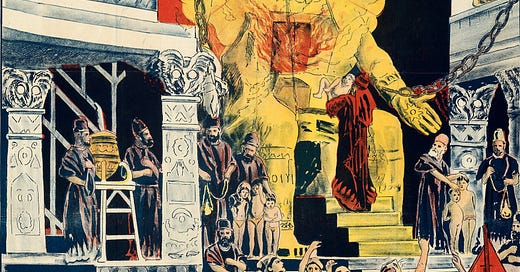



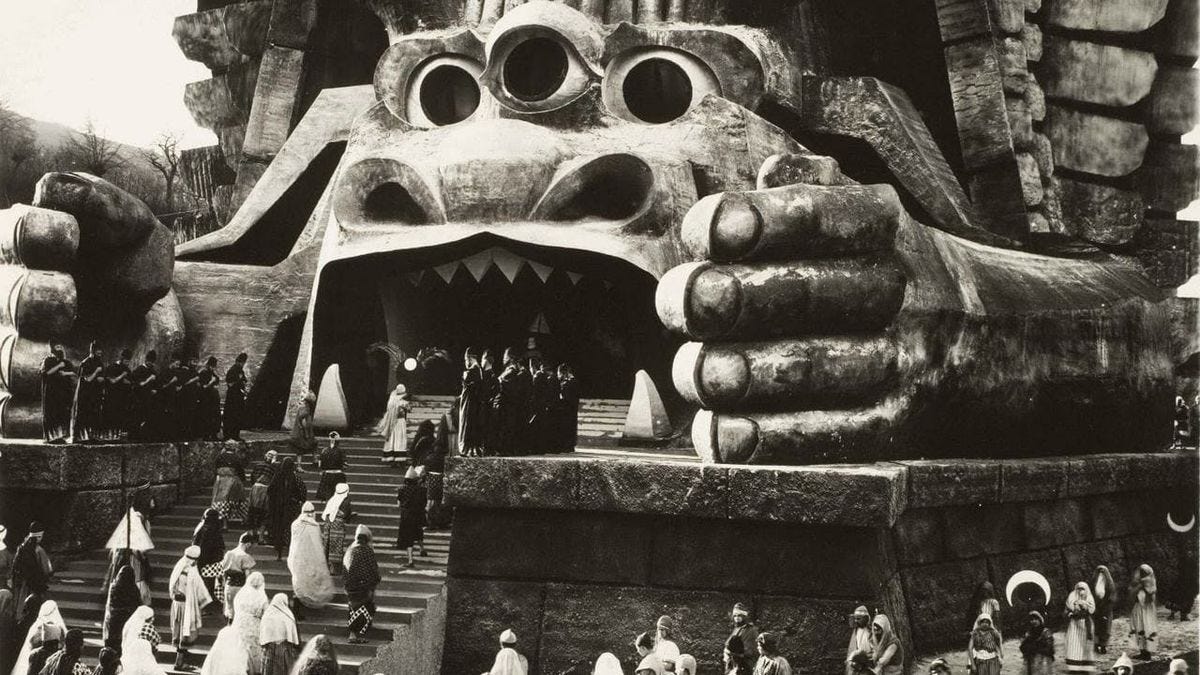
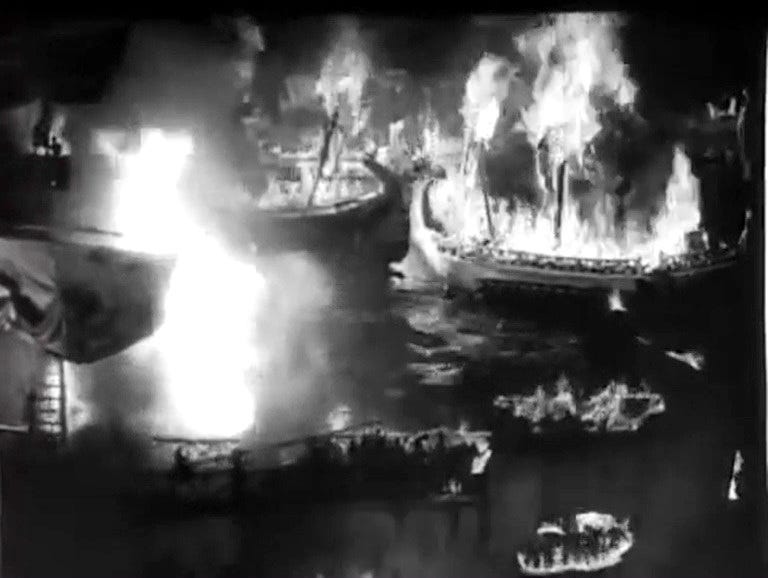
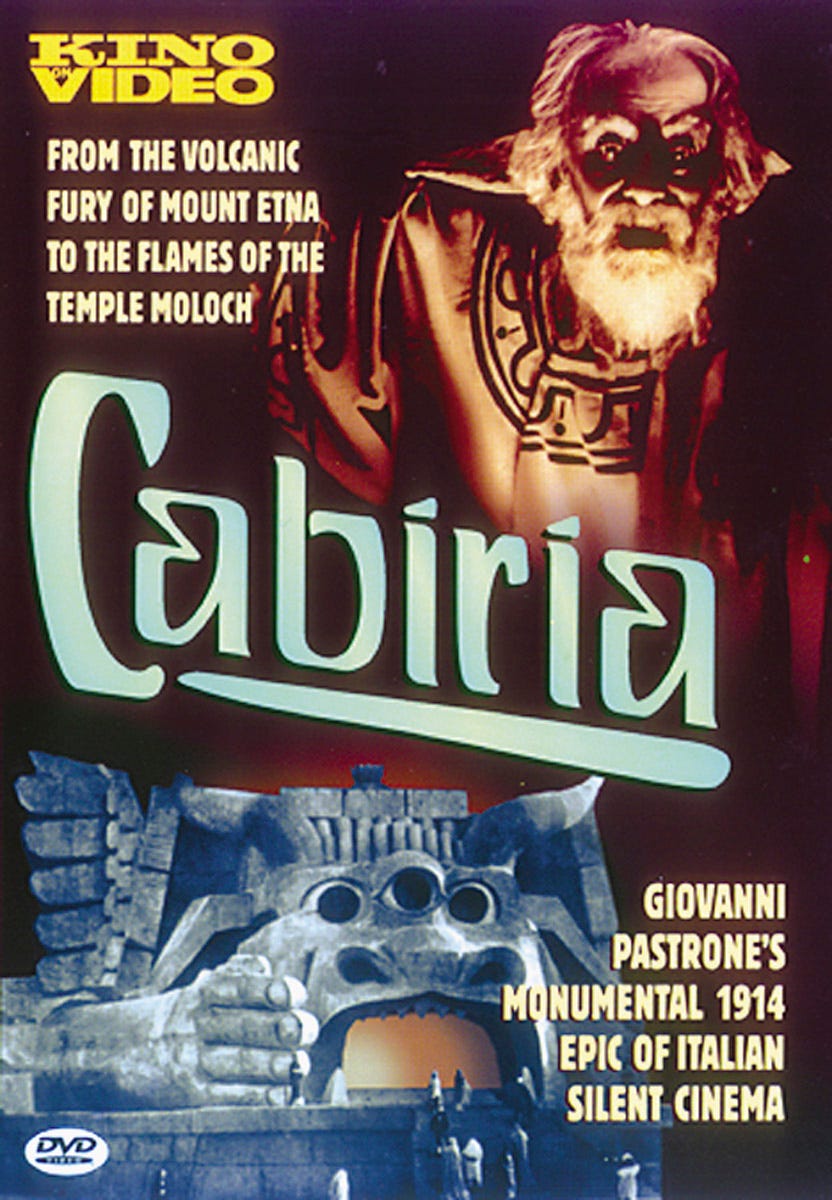





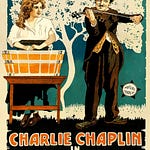


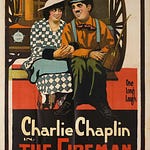
Share this post